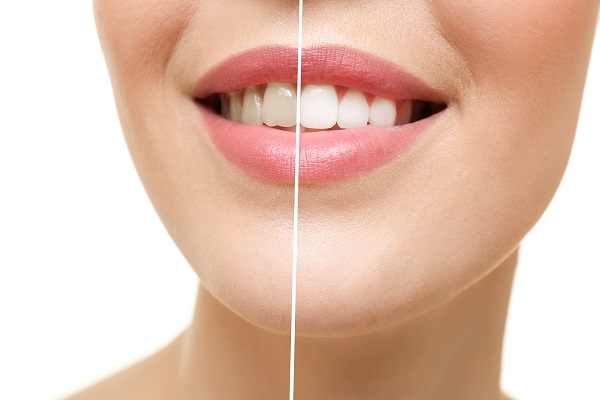How Often Can I Get Teeth Whitening Done?

Professional in-office teeth whitening offers a unique way to improve your smile. If you are not happy with your teeth due to a color shade that is not as white as you would like, in-office teeth whitening may be an appropriate solution for you, and learning more about the treatment option can help you make an informed decision.
Teeth whitening for a better smile
How long the results last and how often you can get teeth whitening depends on several factors, including the status of your oral health and how well you care for your teeth. The following is a review of professional, in-office teeth whitening with insights into how often you can receive in-office treatment.
What is in-office teeth whitening?
Teeth whitening involves using a bleaching agent to whiten teeth that are either stained or have naturally faded away from the desirable white shade. There are two types of professional teeth whitening, which are in-office whitening and take=home professional kits. In-office teeth whitening involves polishing the teeth, isolating the visible surface of teeth from the gums and applying a bleaching agent. The dental visit for teeth whitening typically only takes a day, and it is safe and does not have many risks.
When to consider teeth whitening
Anyone who would like to achieve a more attractive smile by brightening the shade of their teeth can benefit from professional teeth whitening. Dentists may recommend patients with cavities or weakened enamel strengthen their teeth and fill enamel decay before the teeth whitening procedure to minimize teeth sensitivity and pain. However, dentists can build teeth whitening into any treatment plan, regardless of the condition of the patient’s health, although the oral health concerns of the patient often come first.
How often teeth whitening is recommended
Most dentists recommend teeth whitening annually. The results for some patients last for more than a year, depending on how well they care for their smile at home, so not all patients require annual teeth whitening. The best way to determine how often you should schedule a teeth whitening visit is to discuss the treatment with a general dentist. They can put together a treatment plan to keep your smile healthy and looking great throughout each year.
In-office whitening vs. a take-home kit
In-office whitening involves the dentist safely isolating the gums and applying the bleaching agent to teeth. Take-home kits are sent home with the patient and the treatment is conducted at home. In-office whitening lasts longer on average and is much safer, whereas take-home kits are less reliable and need to be done more often. Nevertheless, there are effective take-home kits that are available, so be sure to talk to your dentist about all available whitening options to decide which is best for you..
Learn more about in-office teeth whitening
Give us a call today to set up a dental visit with our experienced team. We enjoy helping our patients achieve their ideal smile, and we offer in-office teeth whitening in addition to other cosmetic and oral health services.
Are you considering teeth whitening in the Scottsdale area? Get more information at https://www.refinedsmile.com.
Check out what others are saying about our dental services on Yelp: Teeth Whitening in Scottsdale, AZ.
Related Posts
An implant crown is made of strong and safe materials to give the patient a reliable long-term replacement option for missing teeth. If you have questions about the materials used to make an implant crown, this review can help you understand what exactly each component is made of and why dentists use these particular materials.There…
Clear aligners are a great way to straighten misaligned teeth and achieve a better smile overall, but there are other orthodontic treatment options which are worth considering as well. One of the hardest decision for those who want teeth straightening treatment is determining which option is best, and having more information about clear aligners can…
Helping your child develop good oral hygiene habits starts at home. But which products should you use to keep their teeth bright and healthy? Our kid-friendly dentist can recommend the best products to support your child's oral healthcare between their routine checkups and cleanings.A soft-bristled toothbrush designed for children is one of the most important…
Dental crowns are an essential restorative treatment for patients who need to protect or strengthen a damaged tooth. However, like any dental restoration, crowns can encounter issues over time. Understanding these common issues and how to address them can help ensure a longer-lasting and more comfortable restoration.One of the most common problems with dental crowns…
